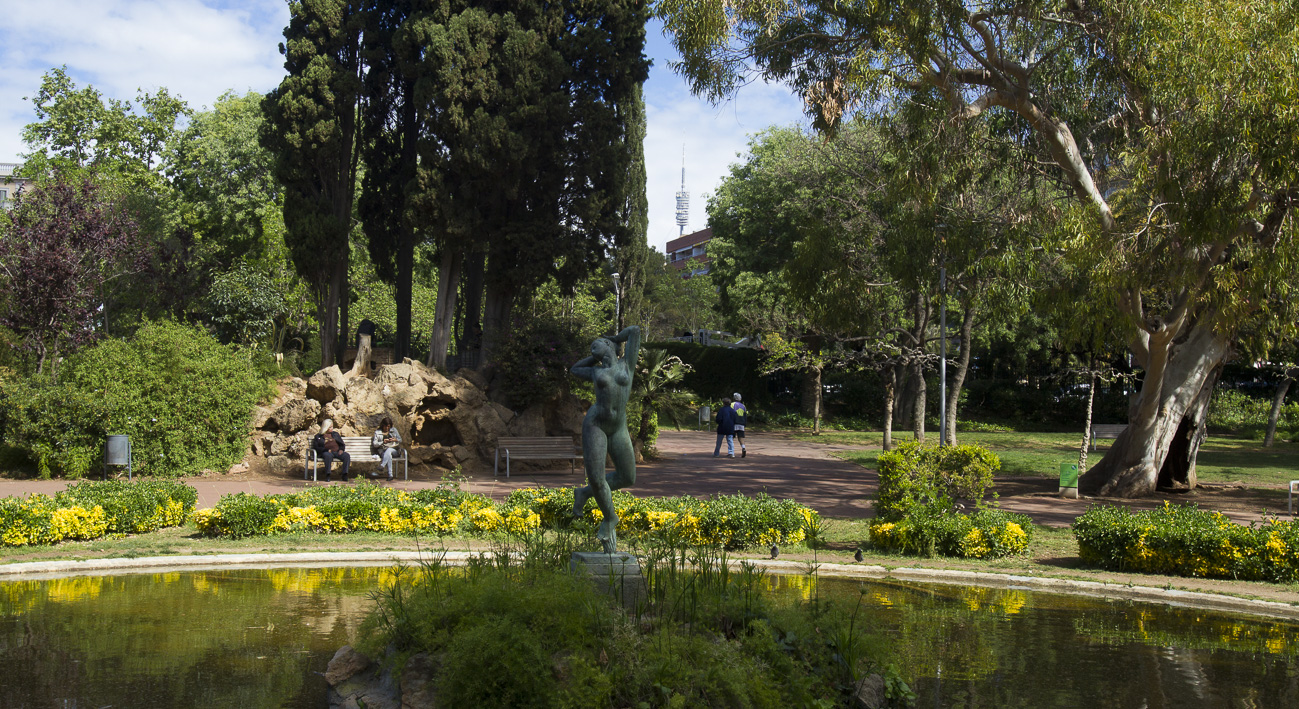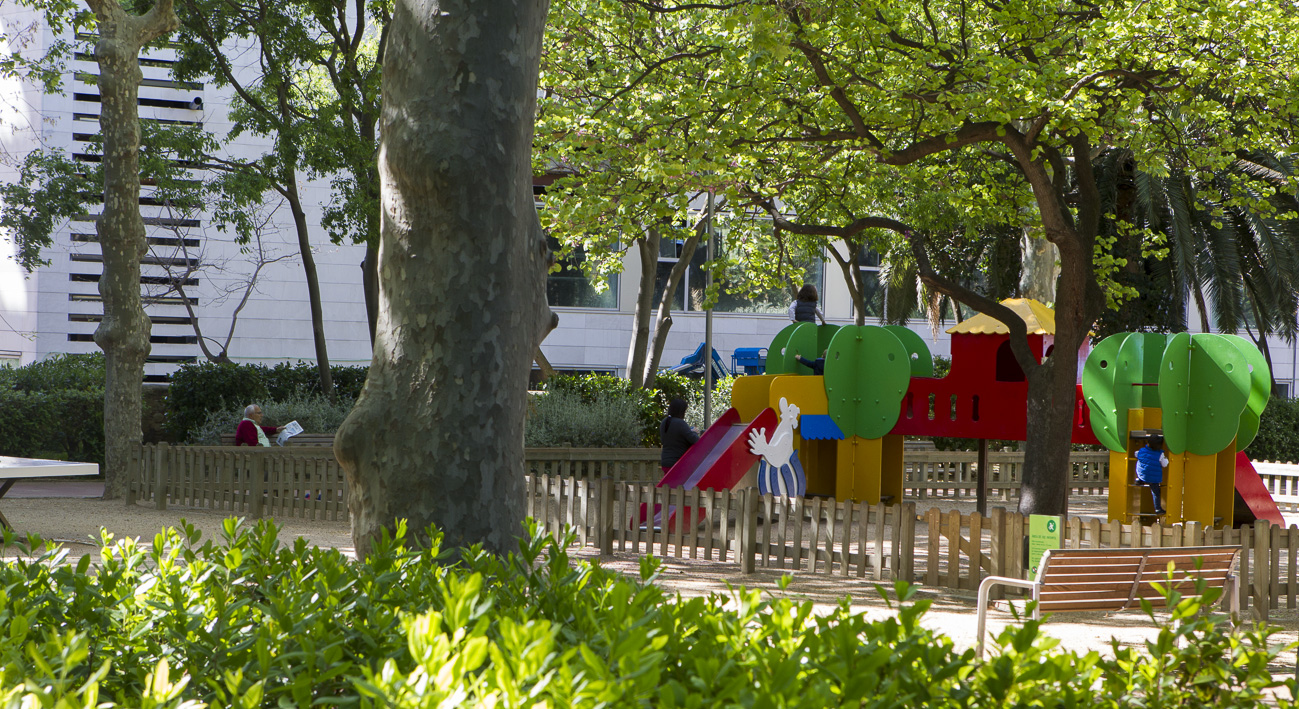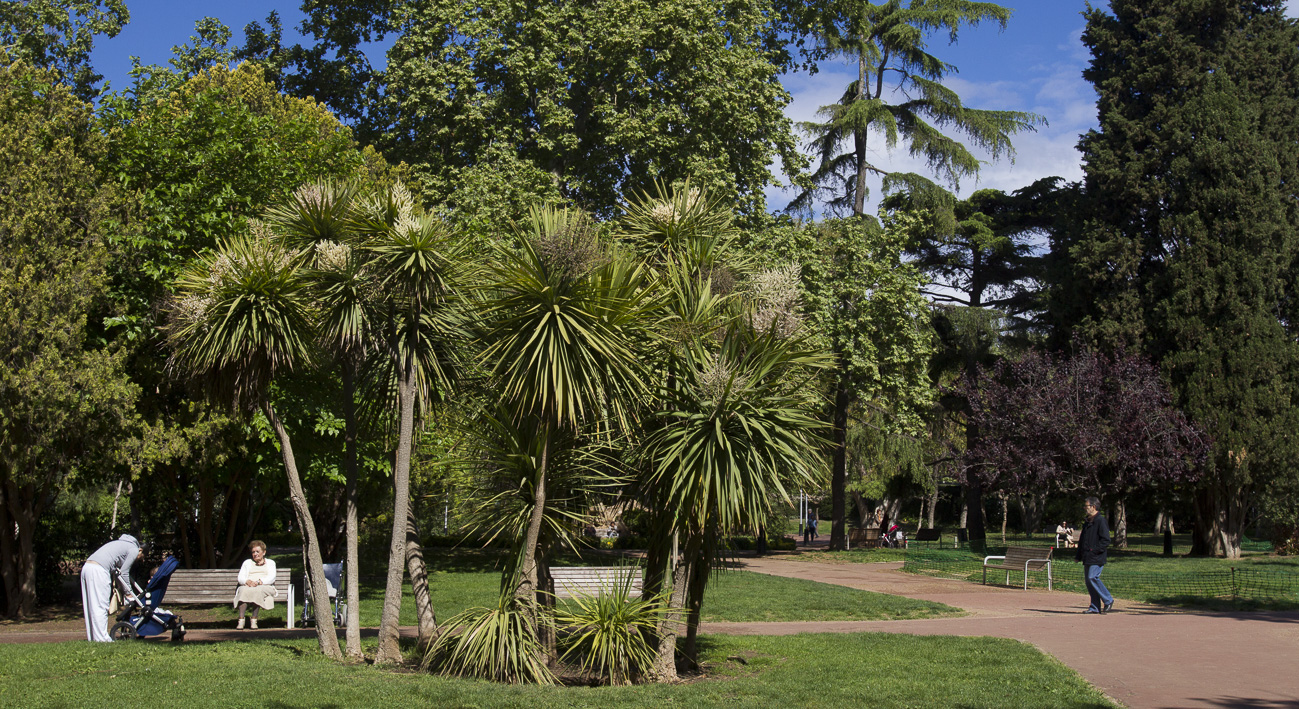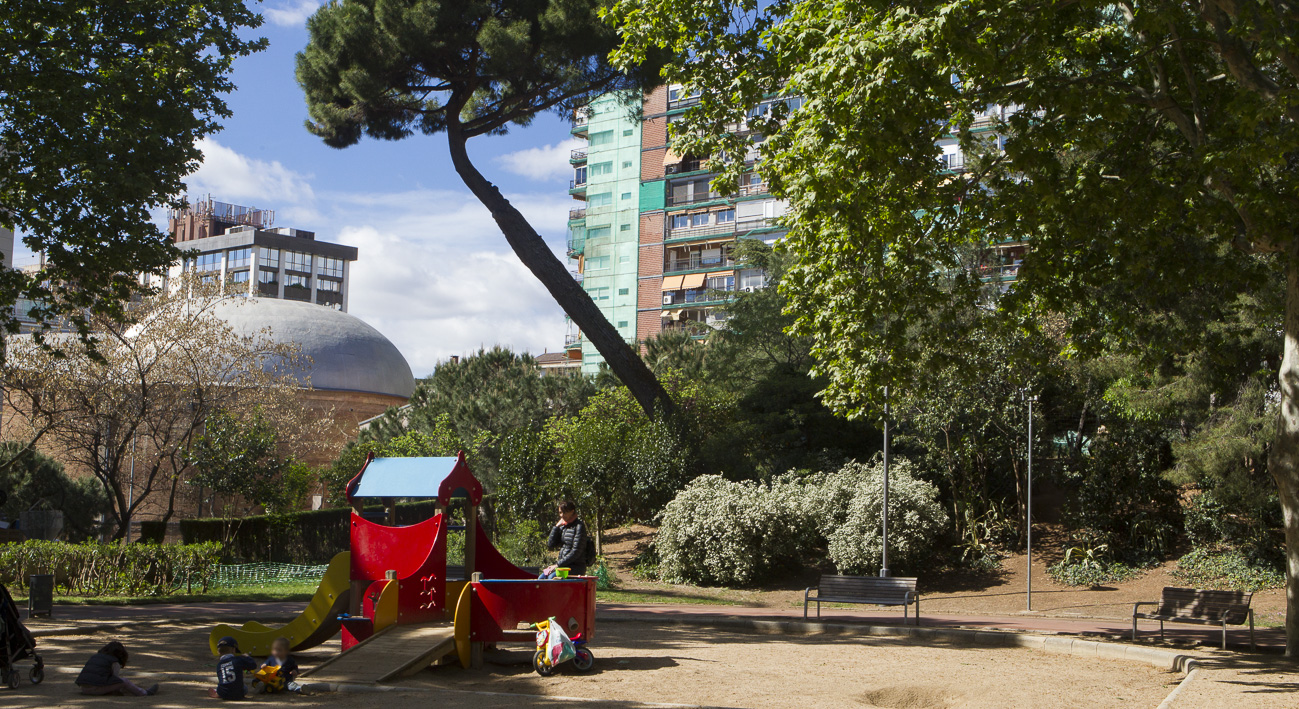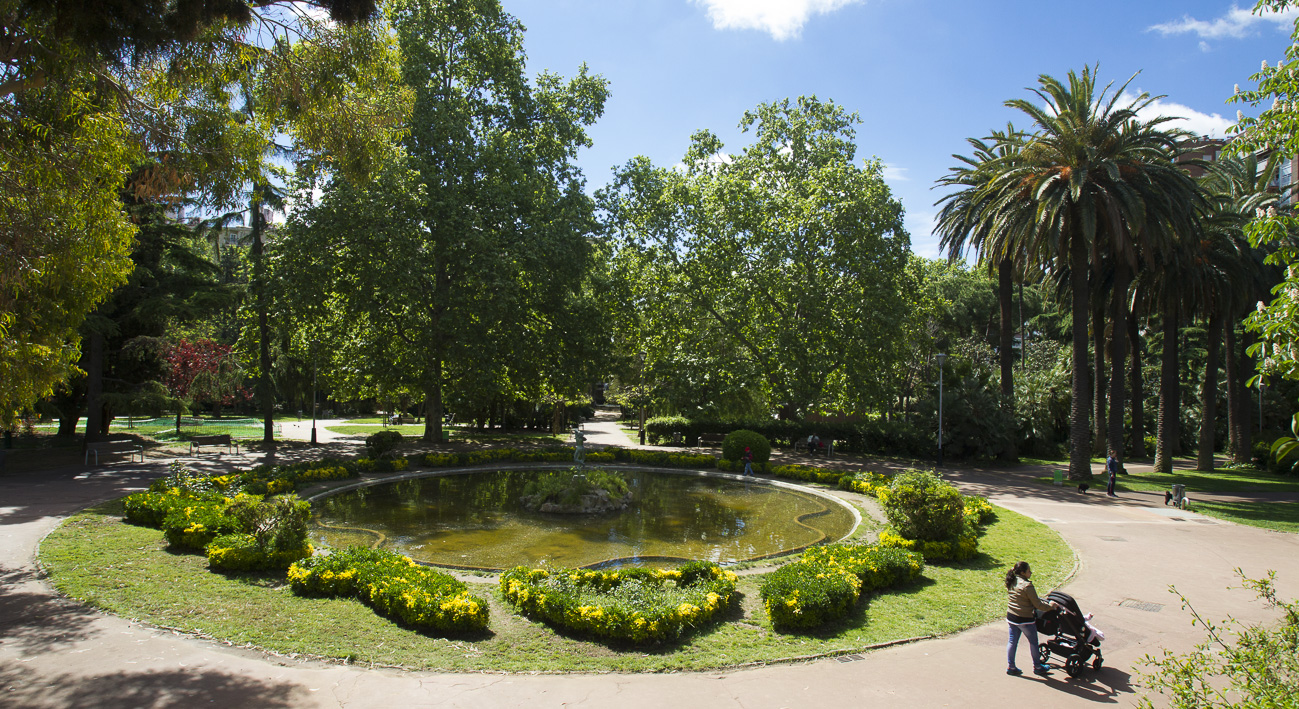
History
The Vil·la Amèlia Gardens date back to the sumptuous gardens built by Ignasi Girona for an estate of his in Sarrià. They were named after his wife, Amèlia de Vilanova. The Girona family used the Quinta Amèlia country estate as their summer residence for many years.
The City Council allocated the land to a public park in 1930 and it was finally expropriated in 1969, on condition part of it would be developed, hence the demolition of the Gironas’ old residence. A section of land went to the Vil·la Cecília Gardens, located on the other side of C/ Santa Amèlia, which opened when the two green spaces were created.

Art and Architecture
A small and slender Dryad, the protective nymph of woods, rises up from a small island in the middle of the pond. This is a bronze figure of a nude teenager, considered to be one of Ricard Sala’s best sculptures. A stone throw’s away, in a spot somewhere between bright and shady, an ephebe plays the flute. This is L’encantador de serps (the Snake Charmer), a bronze sculpture by the Belgium sculptor Jules Anthone.
-
- Phone number
- Tel.: 010
-
- Accessibility
- Accessible for people with physical disabilities
-
- Titularity
- Public center
- Address:
- Carrer d'Eduardo Conde, 22
- Districte:
- Sarrià-Sant Gervasi
- Neighborhood:
- Sarrià
- City:
- Barcelona
Timetable
| Dies | Hores | ||
|---|---|---|---|
| Cada dia | de 08.00 h a 22.30 h |
- Sections of this equipment
- Àrea de joc infantil
- Àrea de joc infantil
- Àrea de joc infantil
- Taules ping-pong
- Àrea d'esbarjo per a gossos
- Àrea de joc infantil
Esdeveniments
-
'Activa't als parcs' als Jardins de la Vil·la Amèlia
Permanent event

